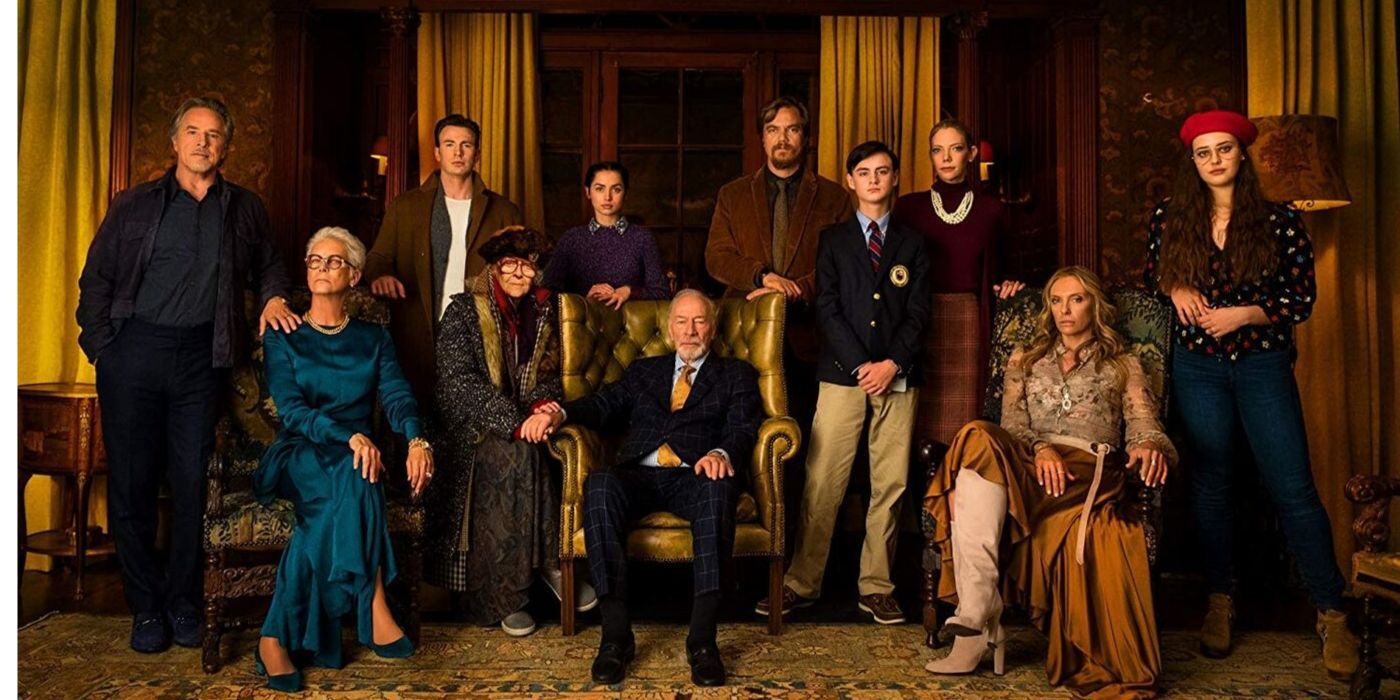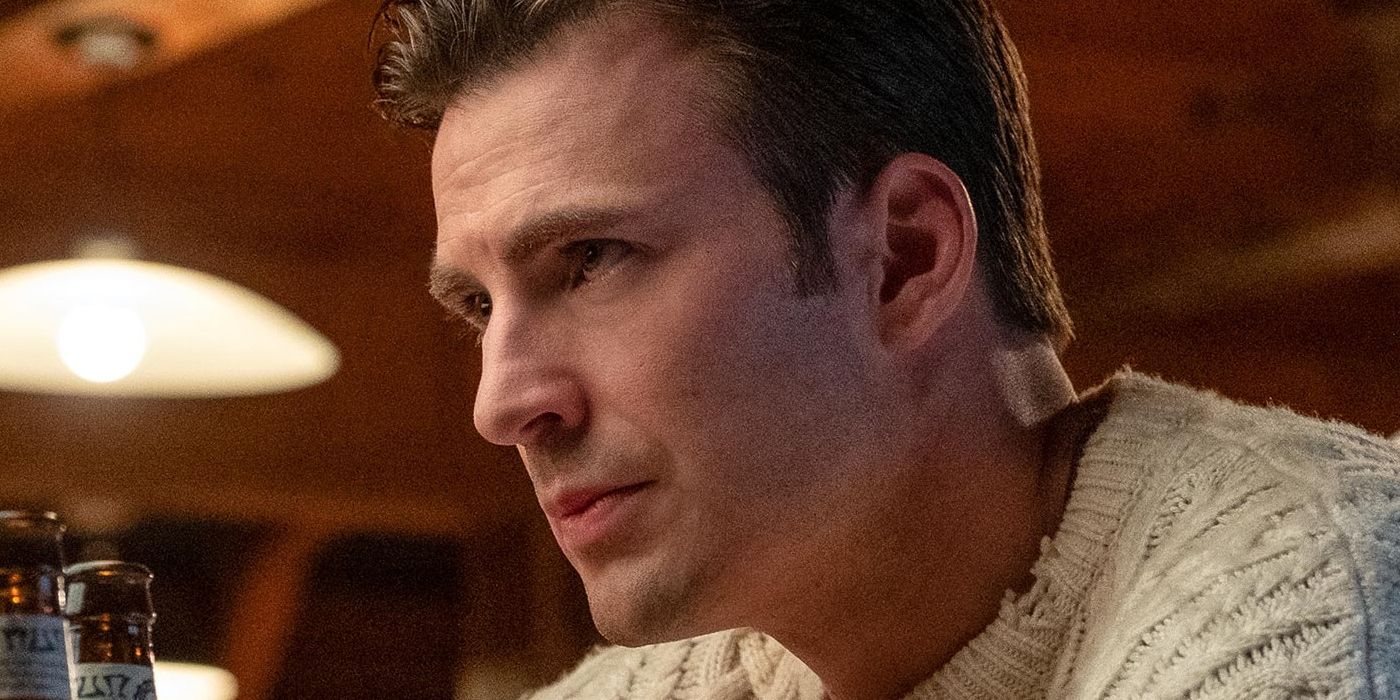WARNING: The following contains spoilers for Knives Out, in theaters now.
Knives Out is a love-letter to murder mystery films, slowly unraveling a conspiracy that involves deceit, destruction and, of course, death. Along the way, the narrative has fun with many of the conventions of the genre, either playing them straight or using them for laughs. Sometimes, they're even used to make the mystery that much more difficult to figure out on first viewing.
Heres how writer/director Rian Johnson used the convention of a red herring suspect to hide the true culprit at the center of the mystery.
RANSOM'S PLAN
Ransom is ultimately revealed to be the one behind the death of his grandfather. After learning that Harlan was going to cut off the family (him included) from his fortune and instead give it to caretaker, Marta, as a thank you for her friendly companionship in the last few years of his life, Ransom devised a plan to frame Marta for the accidental death of his grandfather, thus nullifying her place in his will. This involved sneaking into the house and swapping the labels of Harlan's medicine with that of the morphine, leaving Marta to unknowingly give him an overdose of the morphine which would kill him.
However, things are complicated when Marta actually still gives Harlan the correct medicine out of habit. But convinced that he's about to die, Harlan cuts his own throat in an attempt to make Marta look less like a suspect. Knowing that the blood work will prove Marta innocent, Ransom tries to manipulate her, as well as one of the only witnesses to the crime, the housekeeper Fran, into a situation where Marta can be blamed for Fran's death and for trying to cover up what happened.
But Marta's inherent goodness keeps her from covering it up, instead calling an ambulance for Fran even if it means turning herself over to the authorities. By revealing everything she knows, Detective Blanc is able to decipher Ransom's plan and help reveal his crimes.
THE ANTI-TWIST
Part of the fun of Knives Out is just how likely a suspect everyone in the building is. Multiple people had plenty of reason to want Harlan out of the way: Harlan's son-in-law Richard was being forced to expose his affair to his wife, Linda before Harlan did it; Harlan's daughter-in-law Joni had been stealing from Harlan, so he was about to cut her off, while his son Walt was being fired from his role at the publishing company that Harlan had given him.
But of all of them, Ransom is the most obvious suspect. He and Harlan had a shouting match right before he left, and he was the most antagonistic with the rest of the family. He also openly had the motive -- being cut off from the fortune that had sustained him.
Most mystery stories like to create confusion by not making the most obvious suspect the one who actually committed the crime, though they may have had some role to play in the act or had been manipulated into position by someone else. Usually, the mystery never makes the obvious suspect the culprit, otherwise, the mystery would be solved far too quickly. Johnson's story introduces an obvious suspect in the form of Ransom who seems so guilty that it's difficult for audience members who are well-aware of mystery tropes to not feel like they're being purposefully misdirected.
So, suspicion turns to the rest of the family, like Walt and Joni (both of whom were also awake at the time of the deaths and had been shown becoming more duplicitous and threatening as the film continues). But, it turns out that the red herring wasn't really a red herring at all.
THE ANTI-RED HERRING
A red herring, as used in fiction, is a clue that misleads or distracts from the actual question at hand. It's often the shorthand term for when a story gives the audience a clue that's purposefully meant to lead them to the wrong conclusion so that the mystery might become more complicated.
At first glance, Ransom appears to be the definition of a red herring: the obvious suspect meant to distract us while the actual criminals move behind the scenes. But in Knives Out, our first instinct about Ransom is actually correct. The red herring wasn't a false suspect, he was the killer all along. The narrative uses this one trick on both Marta (who begrudgingly starts to trust Ransom and sees him as the closest thing to an ally she has in the situation) and the audience into thinking there's someone else operating around them.
It's a clever way for Johnson (who has previously written and directed other mystery stories like Brick and The Brothers Bloom) to subvert expectations and to make the expectations of the amateur detectives in the audience part of the game that's being played.
Written, produced and directed by Rian Johnson, Knives Out stars Daniel Craig, Chris Evans, Lakeith Stanfield, Michael Shannon, Don Johnson, Ana de Armas, Jamie Lee Curtis, Jaeden Martell, Katherine Langford, Frank Oz, Toni Collette, Christopher Plummer, and Riki Lindhome.




